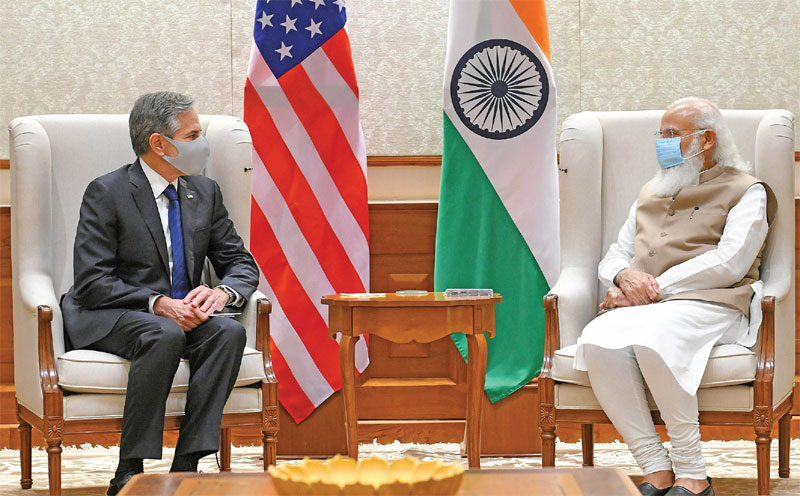What the US withdrawal from Afghanistan say about counter insurgency
 Brig Ravi Palsokar (retd)
Brig Ravi Palsokar (retd)
The manner in which the last of the United States’ troops withdrew from Bagram air base some days ago suggests that the Americans were not sure of what was likely to happen if the withdrawal were done openly. The Afghan National Army detachments based with the US troops discovered in the morning that they were now alone.
It is difficult to understand the actions of both. Were the American detachments so small in number that they could leave without raising any suspicion and also that the Afghans did not have sentries at night who would have watched the Americans leave and they did not inform their commanders? It defies logic to understand what really happened, and also the fact the Americans were concerned about being interfered with as they left, never to return?
Just recently, the British Prime Minister also said that most of their troops had already withdrawn and for security purposes he could not disclose their departure plans. This curious manner of withdrawal from an area one had dominated until recently, reminded me of how I withdrew my Brigade from our operational area where we had fought for two years. It was on the east coast of northern Sri Lanka from the district town of Mullaitivu where we withdrew from in December 1989. The IPKF withdrawal was well publicised and our adversaries the LTTE who we had been fighting in this period knew exactly when our convoys would return to Vavuniya and from there to Trincomalee to return by sea. While there had been no understanding with the LTTE, they knew that any interference would prolong our presence, and in the end, they were relieved to see our backs.
That none, the IPKF in Sri Lanka or the Americans in Afghanistan, had achieved the aims of their intervention only serves to underscore the moral authority which the withdrawing forces had established against their respective adversaries. The fact that the most powerful nation in the world should fight for 20 years and return with their aims unfulfilled and in the manner that it did points to the precarious nature of what is likely to follow in Afghanistan. There are many lessons to be drawn from the US’ intervention and subsequent withdrawal; no doubt reams of paper and many books will be written on this episode. The similarities with the IPKF experience in Sri Lanka are striking, but it is not the purpose of this article to compare the two except in the most general of terms. However, this was not the first time the Americans had intervened with force in Afghanistan, or any other country and it so happens that in most cases the use of armed force abroad has not achieved the desired result.

The point we need to look at is whether it is possible to defeat a homegrown insurgency in another country; the pitfalls of doing so and whether such interventions have the seeds of failure built into them. This is a vast subject because since time immemorial there have been armed uprisings against invaders or unpopular regimes, some of which have been successful, and some have not. Limiting the scope of the present article, I have chosen to restrict it to the period of the 20th Century post the First World War and also limit its geographical spread to the regions of West and South Asia. This is an arbitrary choice mainly to highlight the contradictions inherent in such operations and the lessons that may be drawn from them.
Types of Insurgencies
In general, the types of insurgencies can be divided into two: differing mainly in their aims rather than their methods because violence against the established order remains a common factor to both. Before describing these, it is necessary to recollect the types of armed threats a state faces to its sovereignty. These can be external or internal and both types could be externally or internally abetted.
Chanakya defined these over two millennia ago when he said that threats could be external, externally or internally abetted; or internal, externally or internally abetted. A state is at its weakest when there is a threat to its sovereignty through an internal revolt and it stands to reason that the worst case would be when it is both internally and externally abetted.
Wars of Regime Change
Colonial wars and expansion were the leitmotif of western powers at the beginning of the 20th Century. The British Empire was at its zenith and various European powers had carved out colonies in Africa and Asia. The United States had spread its power in parts of the Pacific Ocean and in many regions of South America.
The First World War upset the rhythm of empire building and the already weakened Ottoman Empire was effectively dismantled at the end of the war. This is of interest for two reasons, one, the British encouraged Arab revolt against the Turks and were successful in their aims. Recall Lawrence of Arabia and the promise of freedom to the Arabs. As a result, the Arabian Peninsula and West Asia saw the establishment of new independent states such as Saudi Arabia, Iraq and Syria, but with a twist. As that war was drawing to a close, two mid-level diplomats of Britain and France, Sir Mark Sykes and Francois Georges Picot respectively had secretly agreed on areas of their countries’ influence. This is commonly referred to as the Sykes-Picot agreement. Most of the demarcation of boundaries was arbitrary and were to the convenience of the colonial powers.
The reason for mentioning this is that the aftereffects of this one-sided division are still causing repercussions and the current upheavals including the rise and fall of the Islamic State can be traced to the disagreement caused subsequently by the Sykes-Picot accord. Returning to the main point, the Arab revolt against the Turks was in effect a war of independence and though it achieved its larger aim, it was the external help that the Arabs got that allowed its success. It also set in motion the movements for independence, mainly in the Indian sub-continent and a tacit agreement for a homeland for the Jews which later resulted in the formation of the state of Israel.
No one at that time imagined that the one-sided stringent conditions imposed on the defeated Axis powers would lead to another world war. The ebb and flow of events in the period between the two world wars gave impetus to the freedom movement in India in particular, and the Second World War brought in its wake the end of the period of colonisation. The resulting tensions saw the emergence of insurgencies in the newly independent nations, some seeking secession and some greater autonomy. Some factors are common to all, and it is a general truth that insurgencies once they take root are extremely difficult to defeat.
You must be logged in to view this content.

